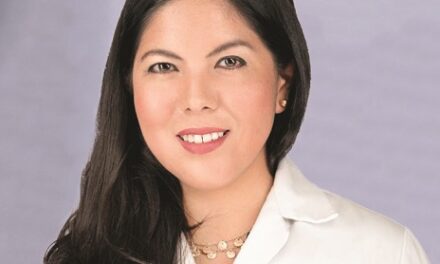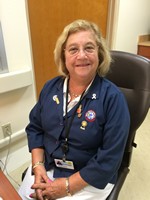 Two of the most perplexing, expensive and pervasive problems confronting the American health care industry are medical errors and the nursing shortage. But these issues are not actually two separate problems, according to a landmark 2004 study completed by the Institute of Medicine of the National Academy of Sciences. The study clearly links patient safety to the working conditions of nurses and calls for urgent and substantial change.
Two of the most perplexing, expensive and pervasive problems confronting the American health care industry are medical errors and the nursing shortage. But these issues are not actually two separate problems, according to a landmark 2004 study completed by the Institute of Medicine of the National Academy of Sciences. The study clearly links patient safety to the working conditions of nurses and calls for urgent and substantial change.
Ann Page, RN, MPH, Senior Program Officer at the IOM and editor of the report, Keeping Patients Safe: Transforming the Work Environment of Nurses, visited the University of Pittsburgh in March to present the reports findings as part of the Graduate School of Public Healths Health Policy Institute lecture series. The study confirms that nurses play a primary role in prevention and reduction of medical errors and that transformation of the work environment of nurses will significantly improve patient safety in health care settings and is also likely to help reduce the exodus of nurses from the workforce.
Nurses represent the largest group of health care professionals and are the ones who interact with patients with the greatest frequency and intimacy. Nurses, who constantly monitor the well being of patients, serve as a critical safety net and were found in one study to actually intercept and prevent 86%of all potential medical errors.
Keeping Patients Safe builds upon the findings of a previous IOM report, To Err is Human, released in 2000, which found that as many as 98,000 patients per year die because of medical errors. According to Professor Donald Steinwachs, Chair of the Department of Health Policy and Management at the Bloomberg School of Public Health at Johns Hopkins University, who chaired the expert committee that produced the report, “Errors arise at every level in the health care system, as in every industry. But they become visible at the sharp edge in health care, thats the bedside, where caregiving takes place – no matter where they originate. Nurses are the ones who see the end result and are usually the ones who stop the errors from proceeding. They are the safety net.”
Page finds that the report is resonating among nurses, as it articulates the concerns that they have been expressing for years. “The report validates the experiences of nurses. Nurses read the report and say, I cant believe it – you got it exactly right. These are all the issues. The committee looked at research from many fields behavioral and organizational psychology, industrial engineering and management science, human factors analysis and nursing and health services. We looked at studies of organizational disasters and studies of high-reliability organizations and pulled all the pieces together. The research indicates that errors result from multiple, interdependent factors throughout an organization. Patient safety is multidimensional and therefore demands a comprehensive response that addresses all facets of the health care organization. Change in nurses working conditions is an essential ingredient in achieving safer patient care.”
Current working conditions for nurses present numerous threats to the safety of patients. Long work hours (both mandatory and voluntary), inadequate orientation and staff development programs, inappropriate nurse: patient ratios and reliance on temporary agencies are among the practices that endanger patients. The IOM report presents a plan that outlines specific, detailed recommendations to address the problems.
According to Page, “All organizations, in every industry, have four fundamental components that are key to creating success. These are management practices, workforce deployment, work design and organizational culture. We have developed a framework of interventions, called safety defenses, based on these components that correspond to the sources of threats to safety within the health care setting.”
These are:
- adopt evidence based management and leadership practices;
- maximize the capability of the workforce;
- design work and workspace to reduce error;
- create and sustain a “culture of safety.”
Especially significant for the nursing work environment, says Page, is creating a culture of trust. “The need for trust is tremendous. Trust between staff nurses and administrators has eroded significantly. The work redesign of the nineties brought about changes in the delivery of nursing care, but much of that redesign took place without nursing input. Promises were not borne out and many nurses believe that patient care and safety has been compromised.”
“Trust is not a platitude,” says Page. “Evidence from organizational research shows that there are tangible actions that make trust happen. Its a function of three things: benevolence, competency and integrity. Managements actions have to match their words if they are to create successful change. A culture of trust facilitates changes that yield patient safety.”
The Keeping Patients Safe study was sponsored by the Agency for Healthcare Research and Quality of the U.S. Department of Health and Human Services, as part of its comprehensive, Congressionally funded initiative to improve patient safety. The committee was not asked to address the nursing shortage but their research unequivocally clarified the link between patient safety and nursing conditions. The expert committee believes that acting on the reports recommendations to improve patient safety will also help to remedy the nursing shortage. Page notes, “The nursing shortage is not just a matter of fewer people becoming nurses. Our expert nurses are leaving and that puts patients at the greatest risk. Almost 20% of licensed nurses are no longer working in nursing, including young nurses who leave after just three or four years. But the way that nurses are utilized is just as important as their numbers.”
Jackie Dunbar Jacobs, RN, PhD, Dean of the School of Nursing at the University of Pittsburgh, commends the report as thorough and optimistic. “It tells us that we can improve safety for patients. It identifies the problems, but it also points to the path to the solutions.” Dunbar Jacobs attended Pages GSPH lecture and is eager for nurses in practice, education and leadership to study the report.
The next step is moving the report forward to those leaders, to the administrators who are in a position to create a culture of safety and transform the work environment. The IOM committee emphasizes that implementation of the reports recommendations cannot be delayed until the nursing shortage is reversed; in fact, implementation of the reports strategies is likely to lead to the retention of nurses nurses who will coordinate and deliver care that produces positive outcomes and keeps patients safe from medical error.
Moreover, in the face of a nursing shortage it is even more important that nurses work environments be constructed in ways that protect patients when there are not enough nurses.
Post Views: 710
 Two of the most perplexing, expensive and pervasive problems confronting the American health care industry are medical errors and the nursing shortage. But these issues are not actually two separate problems, according to a landmark 2004 study completed by the Institute of Medicine of the National Academy of Sciences. The study clearly links patient safety to the working conditions of nurses and calls for urgent and substantial change.
Two of the most perplexing, expensive and pervasive problems confronting the American health care industry are medical errors and the nursing shortage. But these issues are not actually two separate problems, according to a landmark 2004 study completed by the Institute of Medicine of the National Academy of Sciences. The study clearly links patient safety to the working conditions of nurses and calls for urgent and substantial change. 


























